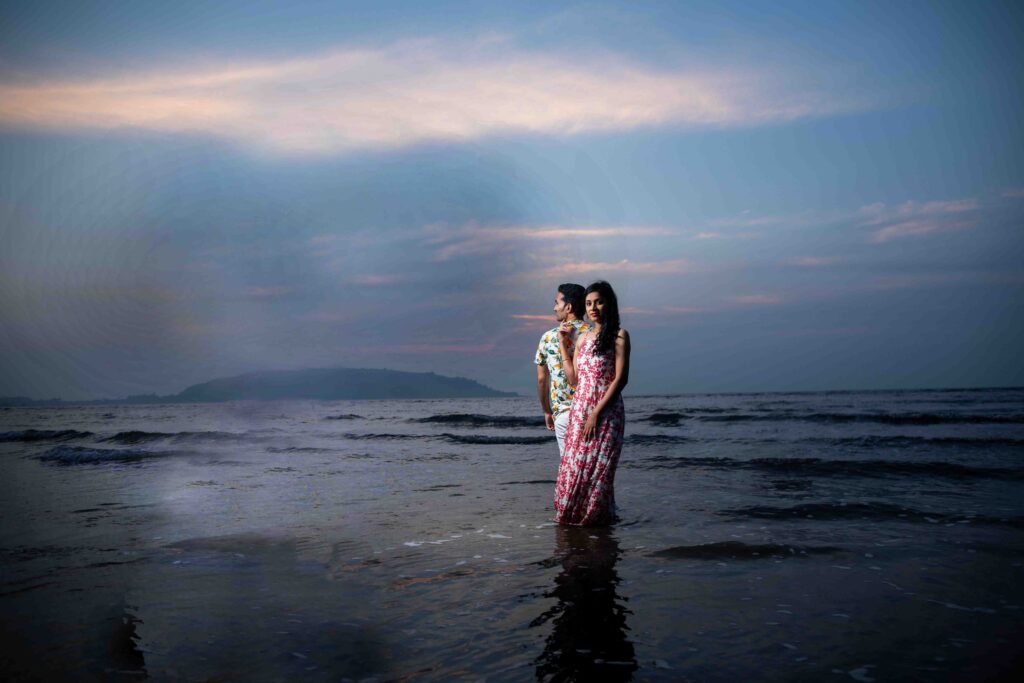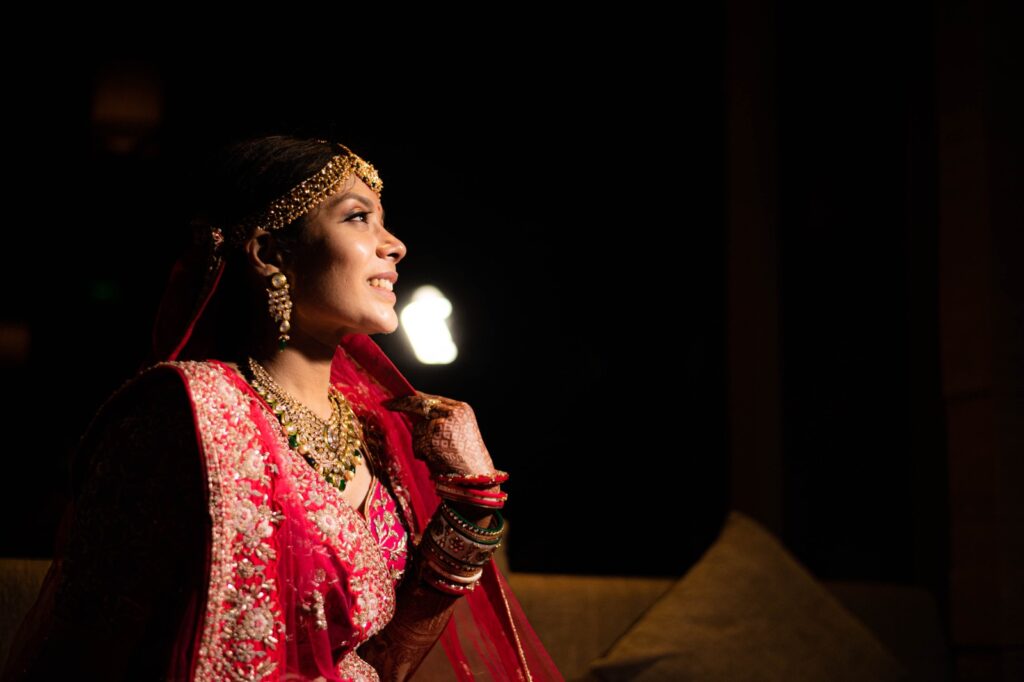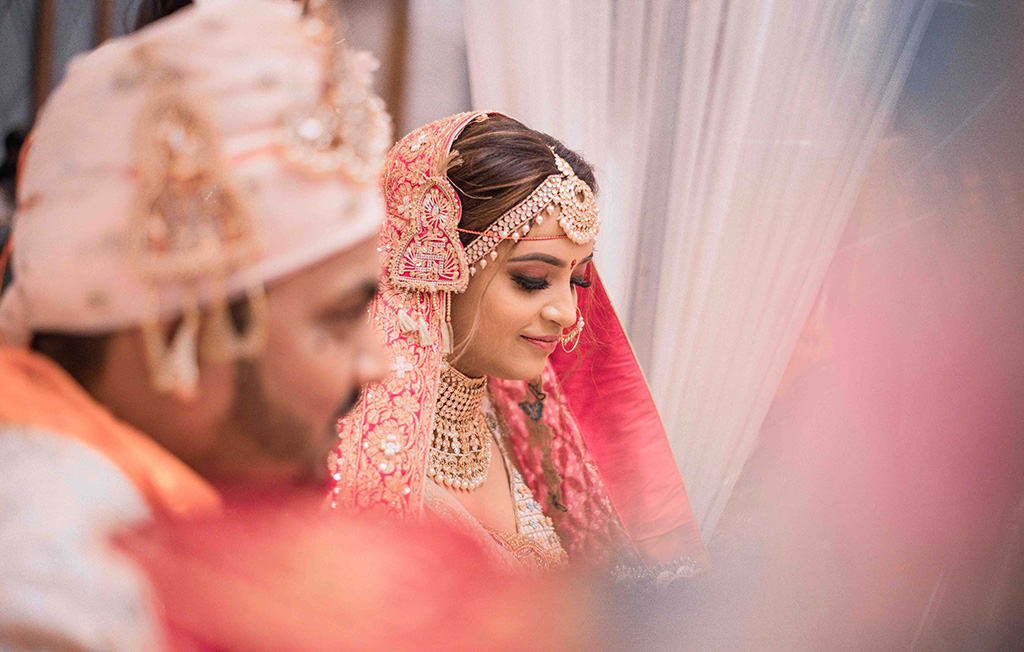wedding photography doesn’t end when the couple walks out of the ceremony or when the last dance concludes. While the wedding photography day itself is the most prominent aspect of the photographer’s work, post-wedding activities, from editing to delivering the final images, are crucial to ensuring the couple is satisfied with their memories. Effective post-wedding timeline management is just as important as capturing stunning photos during the wedding day itself. wedding photography need to consider several factors in the post-wedding period to ensure they maintain a structured workflow and deliver high-quality, timely results.
In this article, we will explore the essential post-wedding timeline considerations for wedding photography, focusing on editing, delivery of photos, client communication, and the overall experience of the couple after the wedding. We will examine the key aspects that contribute to a smooth and efficient post-wedding timeline, the challenges wedding photography face during this stage, and strategies for keeping everything on track to exceed client expectations.
1. Post-Wedding Workflow Overview wedding photography
Once the wedding day has concluded, the wedding photography job is far from over. The post-wedding phase encompasses several critical tasks that ensure the final product is professional, polished, and meaningful to the couple. The timeline for these activities can vary depending on the wedding photography workflow, but a clear and organized approach is essential.
Key components of the post-wedding workflow include:
- Sorting and Backing Up Photos: Ensuring that the images are securely stored.
- Selecting and Culling: Narrowing down the best images from hundreds or even thousands of shots.
- Editing and Retouching: Fine-tuning the photos to enhance their quality and align with the couple’s vision.
- Client Communication: Keeping the couple informed about the progress and providing them with updates.
- Delivery of Final Images: Providing the couple with their completed wedding gallery.
2. Sorting and Backing Up Photos wedding photography
The first step in the post-wedding process is to organize and safeguard the photos taken on the wedding photography day. Sorting and backing up photos are essential to ensure that the files are not lost or corrupted and that the wedding photography can efficiently access the images for the next steps in the workflow.
Backing Up the Photos wedding photography
Immediately after the wedding photography should back up all photos onto multiple hard drives, cloud storage, or both. This ensures that there is a secure copy of the images in case of any technical failures. It is best practice to store images in at least two locations (e.g., external hard drives and cloud storage services) to prevent data loss.
The backup process is essential because:
- Protection Against Data Loss: Photos may be accidentally deleted, or hard drives can fail, but multiple backups help protect against these risks.
- Redundancy: Storing images in different locations ensures that if one backup fails, another copy is available.
Sorting the Photos wedding photography
Once the images are backed up, the next step is sorting the photos. Depending on the scale of the wedding, there can be thousands of photos to go through. This process involves:
- File Organization: Categorizing photos into folders by event type (e.g., getting ready, ceremony, reception, portraits) helps streamline the editing process.
- Reviewing for Duplicates: Photographers must identify and eliminate duplicate or blurry shots, ensuring only the best images are kept.
- Tagging Important Shots: Labeling the images based on the type of moment (e.g., first kiss, family portraits) can help during the selection and editing phases.
3. Culling and Selection of Photos wedding photography
Culling refers to the process of selecting the best photos from the vast number taken on the wedding day. wedding photography must carefully review every image to identify the ones that best capture the emotion, atmosphere, and key moments of the day. This is a crucial step because it ensures that only the highest-quality images make it into the final gallery.

Efficient Culling wedding photography
Culling can be time-consuming, but it is important to work efficiently while maintaining a high standard. Photographers often use software tools like Adobe Lightroom or Capture One to help speed up the culling process. Many photographers follow a system to make decisions quickly:
- First Pass: The photographer reviews the photos for technical quality (sharpness, exposure, composition) and eliminates obviously poor images.
- Second Pass: A deeper review of the remaining images to ensure that the most emotionally powerful, memorable, and meaningful shots are selected.
- Third Pass (Optional): Reviewing specific details such as lighting, background distractions, and color consistency to ensure the images align with the photographer’s desired style.
The culling process should ensure that the final gallery is curated to reflect the best moments, keeping the couple’s emotional journey in mind.
4. Editing and Retouching: Enhancing the Final Images wedding photography
Editing is the next critical step in the post-wedding timeline. Once the best images have been selected, photographers must enhance them to meet both their standards and the couple’s expectations. Editing is a multi-faceted process that involves adjusting exposure, color balance, contrast, sharpness, and more. It also includes creative adjustments, such as applying presets or creating specific looks that match the photographer’s style.
The Importance of Editing in wedding photography
Editing enhances the visual quality of wedding images and brings the photographer’s artistic vision to life. This step is crucial because it ensures that the images match the couple’s style and the overall tone of the wedding. Wedding photographers usually follow a set of guidelines for editing:
- Color Correction: Adjusting the white balance and exposure to ensure that the images appear natural and true to life.
- Skin Retouching: Softening skin tones, removing blemishes, and making subtle adjustments to ensure the couple looks their best without excessive retouching.
- Creative Effects: Adding artistic filters or applying a certain color palette to create a cohesive look that reflects the photographer’s signature style.
The Time Investment for Editing wedding photography
The time needed for editing can vary based on the photographer’s style and the wedding’s complexity. For example:
- Basic Editing: This may take anywhere from 2-5 hours for a small wedding with fewer photos.
- Extensive Editing: More complex weddings, or photographers who focus on high-end or fine art photography, may require 15+ hours of editing for a full wedding album.
Client Preferences and Feedback wedding photography
It’s essential for wedding photography to communicate with the couple before the editing phase begins to clarify any preferences. Some couples may prefer a more traditional look, while others may be interested in a more modern or cinematic style. Photographers should ask about their preferences regarding color grading, image brightness, or whether they want any particular moments to be emphasized in post-production.
5. Client Communication and Updates wedding photography
One of the most crucial aspects of post-wedding photography is maintaining clear communication with the couple. Throughout the editing process, the couple may have questions or concerns about the timeline, their image selections, or the style of the photos. Photographers should keep the couple informed and updated to manage expectations and provide excellent customer service.
Setting Expectations wedding photography
It is vital to set realistic expectations regarding the time it will take to deliver the final images. Wedding photography is a labor-intensive process, and couples should be aware of the photographer’s timeline. Photographers should clearly communicate:
- Editing Timeline: The typical turnaround time for editing (e.g., 4-6 weeks).
- Delivery Formats: Whether the couple will receive digital files, albums, prints, or other products.
- Interim Updates: Whether the photographer will send previews or sneak peeks in the meantime to keep the couple excited and engaged.
Providing Sneak Peeks wedding photography
Many photographers send “sneak peek” images within a few days of the wedding. These images give the couple a glimpse of the photographer’s style and the quality of the work they can expect. Sneak peeks are often shared on social media or via a private online gallery, helping to maintain excitement and engagement.
6. Delivery of Final Images wedding photography
Once the editing process is complete, the final step in the post-wedding timeline is delivering the final images to the couple. The delivery process needs to be handled professionally to ensure that the couple is happy with the results and has easy access to their memories.
Digital Galleries wedding photography
Many photographers use online platforms (like Pixieset, SmugMug, or a custom gallery) to deliver the final images. Online galleries allow couples to view, download, and share their wedding photos with ease. This format also allows wedding photography to offer additional products such as prints, albums, and canvases.
Album Design and Production wedding photography
Couples often opt for wedding albums to preserve their memories. wedding photography may offer album design services, where they curate and design the layout of the album based on the couple’s preferences and the story they want to tell. After receiving feedback and approval from the couple, the album is sent to a professional printing service.
Physical Deliverables wedding photography
Some photographers also provide physical prints or custom items as part of their package. These could include photo prints, thank-you cards, framed portraits, or USB drives with the digital images. Delivering these products requires careful attention to packaging to ensure that they arrive in excellent condition.
7. Follow-Up and Client Feedback wedding photography
After delivering the final images, it is essential to follow up with the couple to ensure they are satisfied with the photos and overall experience. This is an opportunity for wedding photography to collect feedback and identify areas for improvement.
The Importance of Feedback wedding photography
By requesting feedback, wedding photography can learn about what worked well and what could be improved. Positive testimonials can also help build the photographer’s portfolio and attract future clients.
Understanding the Importance of Timeline Management wedding photography
Timeline management in wedding photography is more than just creating a schedule—it’s about ensuring that every key moment is captured in the most effective manner while adhering to the couple’s preferences, respecting the flow of the event, and adjusting as needed. By managing the timeline effectively, the photographer can ensure that all of the essential moments—such as the ceremony, first look, family portraits, first dance, and candid shots—are captured perfectly.
A wedding timeline typically includes multiple stages, from pre-ceremony moments like bride and groom preparations, to post-ceremony events like family photos and the reception. The photographer must navigate between these moments, adjusting to changes and unforeseen delays while delivering high-quality images without rushing or sacrificing creativity.
In this article, we will explore the following aspects of timeline management and scheduling for wedding photography:
- Pre-Wedding Preparation and Planning
- Creating a Realistic Timeline
- Working with Clients and Wedding Planners
- Handling Delays and Unexpected Changes
- Efficiently Managing Multiple Locations
- Dealing with Time Constraints for Family Photos
- Maximizing Time for Candid Shots
- Post-Wedding Timeline Considerations
Each of these elements plays a vital role in ensuring that the photographer not only captures the best moments but also delivers a wedding album that tells a complete, beautiful, and meaningful story.
1. Pre-Wedding Preparation and Planning wedding photography
The foundation for effective timeline management begins long before the wedding day. As a wedding photography, it is crucial to establish communication with the couple, wedding planner, and other vendors to ensure that everyone is aligned regarding the schedule.
Understanding the Wedding Day Flow wedding photography
The first step is to gather as much information as possible about the wedding day. This involves discussing the wedding’s logistics, understanding the couple’s priorities, and having a clear idea of what the couple envisions for their wedding photos. Many couples will have specific moments they want to be captured, such as the bride walking down the aisle or candid shots during the reception. It is also essential to know about the venues, the number of guests, and any special details the couple wishes to include.
Creating a Pre-Wedding Checklist wedding photography
A comprehensive pre-wedding checklist is a must for the wedding photography. This checklist should include key shots the couple wants, as well as a list of people involved in the wedding (family members, bridal party, etc.). Photographers should also ask for a detailed timeline of the day, including preparation times, ceremony timing, dinner, speeches, and dance performances.
Some additional points to consider for preparation include:
- Equipment Check: The photographer should make sure all their gear is in top condition, including cameras, lenses, lighting, batteries, memory cards, and backup equipment.
- Backup Plan for Outdoor Weddings: In case of inclement weather, it’s crucial to have a backup location arranged or discuss contingency plans with the couple.
- Venue Walkthrough: If possible, do a walkthrough of the ceremony and reception venues before the big day to become familiar with the spaces, potential obstacles, and best angles for shooting.
2. Creating a Realistic Timeline wedding photography
Once the pre-wedding preparation is in place, it’s time to develop a realistic timeline. A wedding day can span from early morning preparations to late-night celebrations, and wedding photography must carefully allocate time for each event.
Elements of a Typical Wedding Timeline wedding photography
Here is a general outline of a typical wedding timeline:
- Bride and Groom Preparation: The day usually begins with both the bride and groom getting ready for the ceremony. The wedding photography should capture moments like the bride’s makeup, hair, dress, and the groom’s suit fitting.
- First Look: Some couples choose to do a “first look” before the ceremony, which is a private moment where the couple sees each other for the first time on their wedding day. This is a great opportunity for intimate and emotional photographs.
- Ceremony: The ceremony is the most important part of the wedding day, where the couple exchanges vows and rings. Photographers must be prepared to capture key moments such as the processional, vows, kiss, and recessional.
- Post-Ceremony Portraits: After the ceremony, wedding photography typically take portraits of the bride and groom, bridal party, and immediate family members.
- Reception: The reception includes speeches, the first dance, cake cutting, and dancing. Photographers should capture candid moments and any special events that unfold.
- Late-Night Dancing and Farewell: The final moments of the wedding are often filled with laughter and dancing. Photographers should be ready to capture the energy of the reception before the couple’s grand exit.
Time Allocation and Flexibility wedding photography
When creating a timeline, the photographer should allocate enough time for each part of the day, but it’s equally important to remain flexible. wedding photography rarely run according to plan, and delays or last-minute changes are common. Therefore, building buffer time between events can prevent rushed or missed shots.
For example, while a typical portrait session may take 30-45 minutes, the wedding photography should allow 60 minutes in case of delays, outfit changes, or unforeseen circumstances. Similarly, when scheduling family portraits, it’s wise to include extra time for organizing family members and making adjustments to groupings.
3. Working with Clients and Wedding Planners wedding photography
Collaboration with the couple and the wedding planner is essential to ensure that the wedding photography timeline aligns with the overall event schedule. It’s important for the wedding photography to work closely with these individuals, ensuring that everyone is on the same page regarding timing, logistics, and expectations.
Discussing Priorities wedding photography
The couple may have certain moments they want to prioritize, such as capturing portraits at sunset, or taking photos in a specific location. Wedding planners also have a detailed timeline for the event, and the photographer should incorporate those into their planning.
It is beneficial to schedule meetings or phone calls with the couple and planner prior to the wedding to ensure that everyone is aligned. Clear communication will help the photographer anticipate the flow of the day and adapt to changes as they occur.
4. Handling Delays and Unexpected Changes wedding photography
Despite careful planning, delays and unexpected changes are inevitable. wedding photography are complex events, and various factors can throw off the schedule. For example, a wedding may run late due to extended hair and makeup sessions, a bride’s dress getting caught, or a vendor arriving late. Photographers must be prepared to adapt and manage their time to ensure that key moments are captured.
Quick Thinking and Adaptability wedding photography
One way to handle delays is to stay proactive. If the wedding photography is aware of delays in advance, they can adjust their approach. For instance, if the bride’s preparations run late, the photographer can focus on capturing the groom’s getting ready shots first.
If a major part of the timeline gets delayed (such as the ceremony), the wedding photography can adjust by taking advantage of moments that arise naturally, such as candid shots of the guests or family members. Having a mental checklist of critical moments ensures that no important shots are overlooked.
Communicating with the Couple and Wedding Planner wedding photography
If delays occur, the wedding photography should keep the couple and wedding planner informed about the timeline adjustments. Communicating clearly and promptly ensures that everyone is aware of what to expect and can make necessary accommodations.
5. Efficiently Managing Multiple Locations wedding photography
wedding photography often involve multiple locations, such as getting ready at different venues, a ceremony at a church, and a reception at a separate site. Managing travel time between these locations can be a logistical challenge, especially in a busy city or a remote location.

Planning for Travel Time wedding photography
To ensure timely arrival at each location, the wedding photography must factor in travel time, including potential traffic, parking, or walking distances. Having a clear understanding of the layout of the venues is crucial, as well as knowing how much time it will take to get from one place to another. It’s also wise to arrive at each location early to prepare and scout for the best spots to shoot.
If the wedding takes place in a large venue or city, the wedding photography may want to have an assistant or second shooter to help manage different locations and angles.
6. Dealing with Time Constraints for Family Photos wedding photography
Family and group portraits are an essential part of wedding photography, but they often come with time constraints. With multiple family members and guests to organize, the photographer must work efficiently to capture all the desired groupings without taking up too much of the couple’s precious time.
Prioritizing Family Photos wedding photography
The wedding photography should discuss the family photo list with the couple ahead of time, so they know which family members are to be included. These shots should be planned and organized in advance to minimize time spent on family portraits.
To maximize efficiency, the photographer can create a shot list with specific family members and groupings. Having someone assist with organizing family members can also help streamline the process.
Characteristics of Traditional or Classic wedding photography
1. Posed and Structured Shots wedding photography
The defining feature of traditional wedding photography is the heavy reliance on posed shots. The photographer will direct the couple and their families into specific poses, making sure everyone is well-aligned, looking their best, and positioned in a way that creates a visually appealing image. The goal is to achieve perfect symmetry, balance, and harmony in the shots. The wedding photography takes charge of ensuring that everyone looks polished and formal.
For instance, traditional shots often include posed family photos, such as the bride and groom with both sets of parents, the bride and her bridesmaids, the groom and his groomsmen, and large group shots with extended family members. These images are typically composed with careful attention to detail, with the photographer working to ensure that everyone is positioned properly for the shot.
2. Formal Portraits wedding photography
A key element of traditional wedding photography is the focus on formal, timeless portraits. Couples may have several formal portraits taken during the day, including individual portraits of the bride and groom, as well as shots of them together in carefully arranged settings. These portraits are often captured in ideal lighting, either indoors in a studio-like setting or outdoors with a beautiful backdrop such as a garden or scenic landscape.
These portraits are often characterized by a sense of elegance and sophistication, as the wedding photography carefully arranges the couple in poses that highlight their features and capture them at their most polished. These portraits are intended to be classic and timeless, capturing the essence of the couple on their special day.
3. Timeless Style and Simplicity wedding photography
Traditional wedding photography tends to favor a more timeless and elegant style, with an emphasis on simplicity. Unlike more modern or trendy styles, traditional photography avoids excessive use of props, experimental angles, or unconventional compositions. The photographer’s aim is to create timeless images that will look just as beautiful in 50 years as they do today.
This focus on simplicity and elegance means that traditional wedding photography often avoids the more dramatic or avant-garde elements that are common in other photography styles. Instead, the images focus on natural beauty, balanced compositions, and the beauty of the couple and their surroundings.
4. Structured Timeline and Shot List wedding photography
Because traditional wedding photography is highly organized, the photographer often works with a shot list or timeline to ensure that no important moment is missed. From the pre-ceremony preparations to the reception, the photographer follows a planned approach to capture each stage of the wedding day. This structured approach allows the wedding photography to guide the couple and their guests through each shot, ensuring that all the essential moments are documented in a formal, polished manner.
The timeline may include posed family shots, group portraits, candid moments during the ceremony, and the major events of the reception, such as the cake cutting and first dance. This methodical approach to wedding photography ensures that no key moments are missed and that the final album contains a comprehensive, organized record of the day.
Pros of Traditional or Classic wedding photography
1. Timeless and Elegant Imagery wedding photography
One of the most significant advantages of traditional wedding photography is the timeless quality of the images. Traditional photographs are designed to be elegant and formal, and as such, they often retain their appeal for generations. Couples who choose traditional wedding photography can rest assured that their photos will never go out of style. The formal poses, beautiful lighting, and attention to detail ensure that these images can be cherished for years to come.
The focus on classical compositions and the careful guidance of the photographer leads to polished, flattering images that emphasize the couple’s beauty and elegance. Many couples appreciate the timeless nature of these photographs, which remain just as special decades after the wedding.
2. Perfect for Formal Weddings wedding photography
Traditional wedding photography is ideal for couples planning a formal or classic wedding. If you envision a traditional ceremony with a formal dress code, elaborate decorations, and formal reception activities, traditional wedding photography can perfectly complement this type of event. The highly structured nature of traditional wedding photography aligns well with a formal atmosphere and ensures that each moment is captured in the most flattering light.
For couples who desire a grand, formal wedding with all the traditional elements, traditional wedding photography creates a cohesive visual story that reflects the elegance and sophistication of their event.
3. Comprehensive Coverage of Key Moments wedding photography
Traditional wedding photography ensures that all the major milestones of the wedding day are captured. The structured approach means that the wedding photography will work through a comprehensive shot list, ensuring that no important moment is overlooked. From the first look to the family portraits, the exchange of vows, and the cutting of the cake, traditional wedding photography covers every important moment.
This comprehensive coverage is perfect for couples who want to ensure that every key moment of their wedding is documented. Because the wedding photography follows a clear plan, couples can be confident that they won’t miss out on any important shots.
4. Family and Group Photos wedding photography
Traditional wedding photography is particularly well-suited for capturing formal family and group shots. For many couples, family photos are one of the most important parts of the wedding day. With traditional photography, the wedding photography can arrange family members and wedding party members into carefully posed group shots that ensure everyone is included in the album.
These group shots are often the ones that couples will cherish for years, as they capture loved ones together on such a special occasion. For families with extended members or for couples who have a large wedding party, traditional wedding photography ensures that every important family member and guest is included in the final collection of images.
5. Peace of Mind wedding photography
For couples who are nervous about being in front of the camera, traditional wedding photography offers the peace of mind that comes with knowing they will have beautifully composed, flattering images. The photographer takes control of the situation, directing the couple and their families through every pose and shot. This can help alleviate any stress or anxiety about the photos, especially for couples who are uncomfortable with more candid, unscripted styles of wedding photography.
With traditional wedding photography, the couple can focus on enjoying their day, knowing that their photographer is handling all the details to ensure they look their best.
Cons of Traditional or Classic wedding photography
1. Stiff or Posed Feel wedding photography
One of the main drawbacks of traditional wedding photography is that it can sometimes feel stiff or overly posed. Because the wedding photography directs every shot, some couples may feel that their photos lack the natural, candid quality found in other styles such as documentary or photojournalistic wedding photography. Posed shots can sometimes appear unnatural, especially if the couple or guests feel uncomfortable with the formalities.
For couples who prefer a more relaxed, spontaneous approach to their wedding photos, traditional photography may feel limiting. The structure and direction involved may not appeal to those who want to focus on capturing genuine moments and emotions.
2. Lack of Spontaneity wedding photography
Traditional wedding photography often prioritizes structured shots over spontaneous moments. While key moments like the exchange of vows and the first kiss are captured, the style may not place as much emphasis on candid interactions, genuine emotions, or unposed moments that occur naturally throughout the day. For couples who value the authenticity and rawness of candid shots, traditional wedding photography may feel too controlled or staged.
In contrast to documentary-style photography, which thrives on capturing real-time emotions, traditional wedding photography can sometimes miss the magic of spontaneous moments.
3. Time-Consuming Process wedding photography
Traditional wedding photography can be time-consuming, especially when it comes to posed shots. Couples may need to spend a significant amount of time during the wedding day standing still and following instructions for each shot. This can take away from the overall enjoyment of the day, as the couple may feel like they are constantly being directed and posed.
While it’s important to capture these moments, some couples may prefer a quicker, less rigid process that allows them to spend more time with their guests and enjoy the celebration.
4. Less Creative Freedom wedding photography
Because traditional wedding photography focuses heavily on posed shots and classic compositions, it may not offer as much room for creative expression or artistic experimentation. Photographers who specialize in traditional wedding photography may have to stick closely to conventional poses and formats, limiting the opportunity for the photographer to experiment with angles, lighting, and artistic approaches.
For couples who want a more creative, personalized take on their wedding photos, traditional wedding photography may feel restrictive or uninspiring.

Conclusion wedding photography
Traditional or classic wedding photography continues to be a beloved and popular choice for many couples. Its timeless appeal, focus on elegance, and comprehensive coverage of key moments make it an ideal style for those who want a formal, polished record of their wedding day. With its attention to detail and carefully staged shots, traditional wedding photography creates beautiful, timeless images that couples can cherish for years to come.
However, this style may not suit every couple. The posed nature of traditional wedding photography can sometimes feel stiff or staged, and those seeking spontaneity or creative flair may prefer other styles. Nevertheless, traditional wedding photography remains a mainstay in the wedding industry, offering a reliable, classic way to document one of the most important days in a couple’s life. Whether you’re drawn to its timeless elegance or appreciate its structured approach, traditional wedding photography is a style that captures the beauty, grace, and significance of the wedding day.
Destination wedding photography offers numerous advantages for both photographers and couples. From stunning and unique backdrops to creative freedom and intimate settings, the opportunity to capture a couple’s love story.
Managing the post-wedding timeline effectively is critical for wedding photography to deliver high-quality, meaningful images to their clients. From sorting and backing up photos to editing, communicating with clients, and delivering the final images, each step in the post-wedding process is an integral part of ensuring a smooth and professional experience for the couple. By staying organized, setting clear expectations, and maintaining open communication, wedding photography can navigate the post-wedding phase efficiently, leaving the couple with lasting memories they will cherish for years to come.














